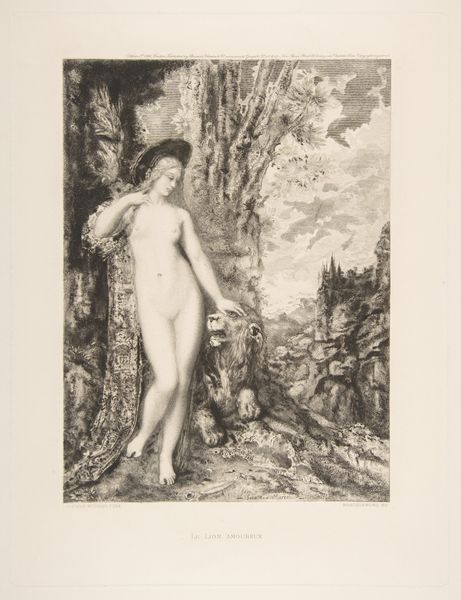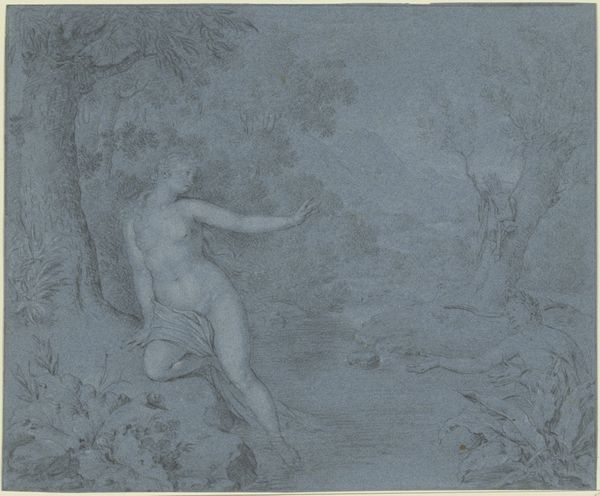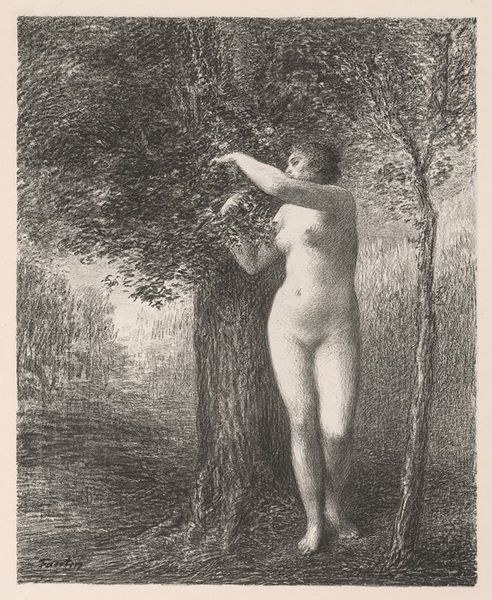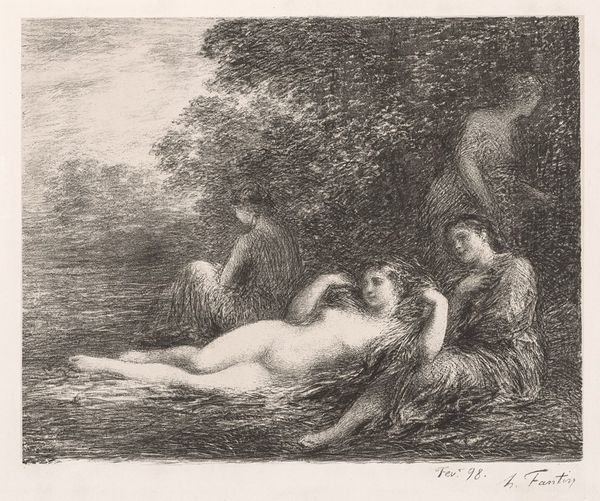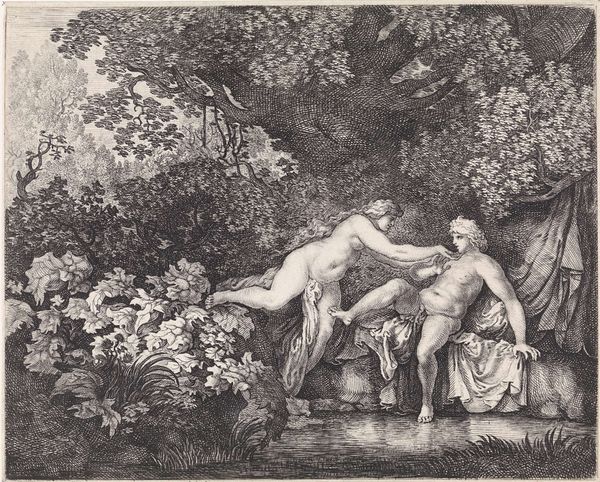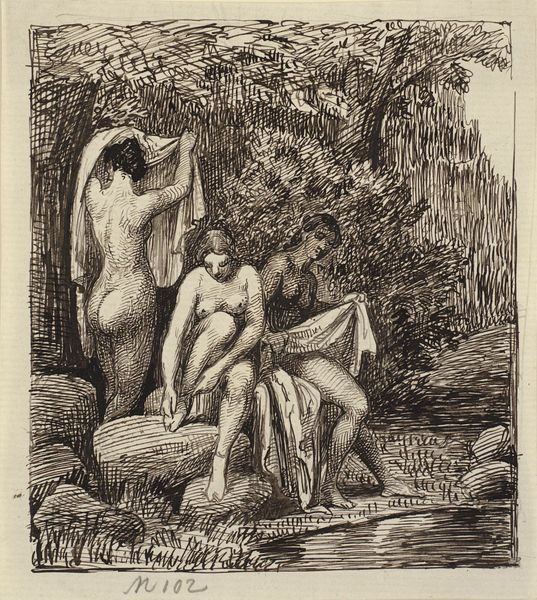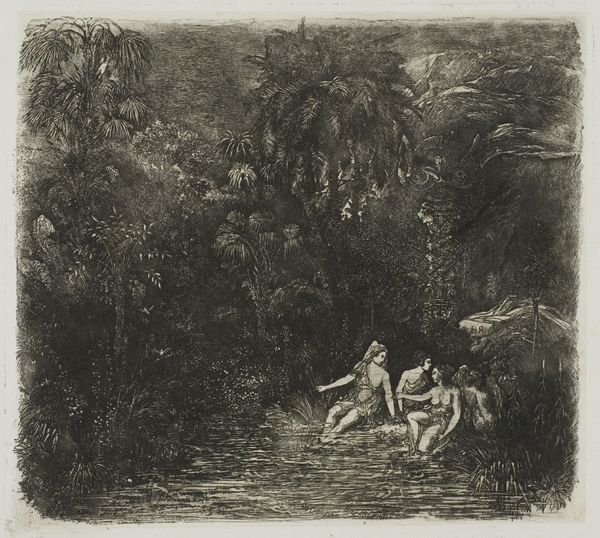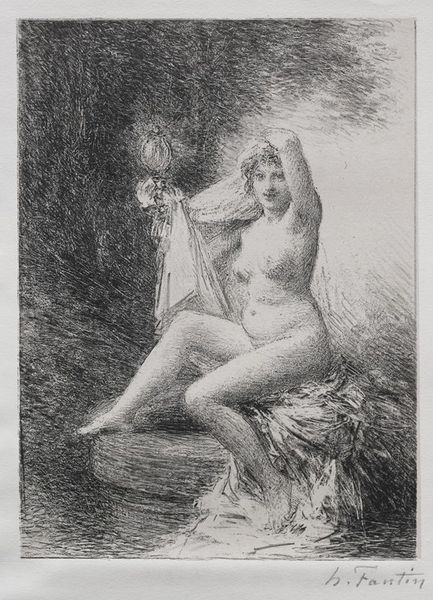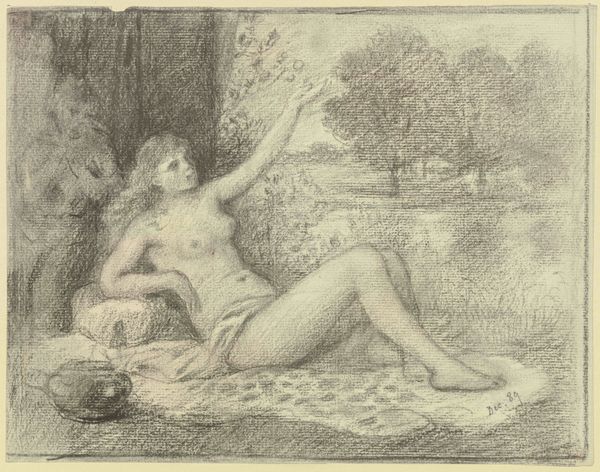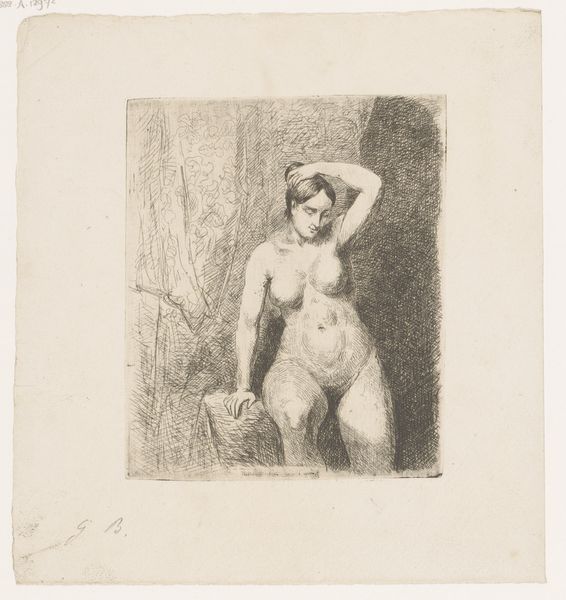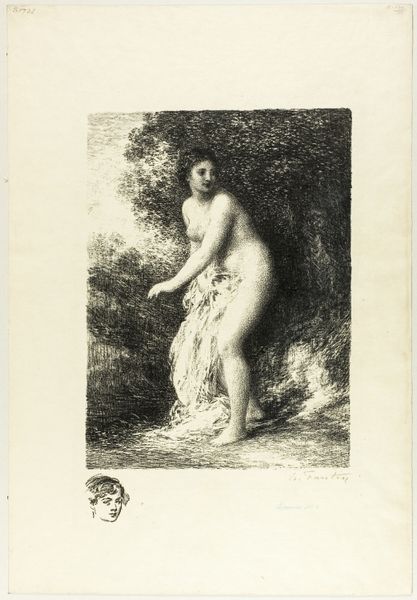
Copyright: Public Domain: Artvee
Henri Fantin-Latour created this lithograph titled 'Bathers,' populated with nymphs in an idyllic wooded landscape. The bather motif echoes back to classical antiquity, where images of goddesses and nymphs were rife with symbolic meaning. The nymph, a symbol of natural beauty and purity, appears frequently in classical art, embodying the life-giving forces of nature. Think of the water nymphs from ancient Roman mosaics; Fantin-Latour’s bathers borrow from this tradition, yet their appearance shifts with the currents of time, reimagined through a 19th-century lens. The gesture of draping a cloth over the body, seen here, can be traced back to ancient depictions of Venus, the goddess of love and beauty. This motif is not static; it has adapted through history, appearing in various guises in Renaissance and Baroque art. The enduring presence of these symbols speaks to a collective memory, tapping into our primal connection with nature and beauty. This piece resonates on a subconscious level, reminding us of the timeless allure of the female form and the natural world. It is a visual echo across time, demonstrating how symbols resurface, evolve, and take on new meanings in different eras.
Comments
No comments
Be the first to comment and join the conversation on the ultimate creative platform.
